As cold northerly winds sprinkle the first snow on the mountains surrounding the medieval Japanese city of Okuma, those who fled the city after last year’s disaster at the Fukushima Dai-ichi nuclear power plant are losing hope of ever returning to their homes.
Okuma lies close to the power plant and was hastily evacuated when a huge earthquake and tsunami crippled the power plant on March 11 last year.
Okuma Mayor Toshitsuna Watanabe has vowed to lead residents back home as soon as radiation levels are low enough. Yet the slow pace of the Japanese government’s cleanup efforts and the risk of another leak from the plant’s reactors has forced city officials to admit in September that resettlement might not happen for at least a decade.
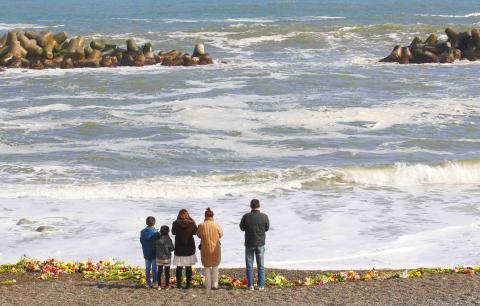
Photo: Reuters
A growing number of Okuma evacuees are pessimistic about ever living there again. At a temporary housing complex in Aizu-Wakamatsu, a city 97km west of the plant, the mostly elderly residents say they do not have much time or energy left to rebuild their town.
Many said they preferred plans that got them out of temporary housing, but helped them maintain the friendships and communal bonds built over a lifetime, such as rebuilding the town farther away from the plant.
“I was one of those who kept saying: ‘We will go back, we will go back!’” said Toshiko Iida, 78, who left her rice farm behind. “Now, they are saying it will be years before we can go back. I’ll be dead then.”
Such feelings of resignation are shared by many of the 159,000 people who fled their towns after the triple meltdown at the Fukushima plant.
After first being reassured by the authorities that the accident was not so bad, then encouraged as the costly decontamination effort began, many evacuees are finally accepting that it may take decades, perhaps generations, before their town could be anything like it was before the disaster.
“We all want to go back, but we have to face the obvious,” said Koichi Soga, 75, a retired carpenter.
Such sentiments have led to a very public loss of hope by the 11,350 displaced residents of Okuma, one of nine communities within 19.3km of the stricken plant that were evacuated.
After living shelters for about a month, Okuma Town Hall officials and about 4,300 of its residents relocated to temporary sites in Aizu-Wakamatsu, with the rest scattered as far as Tokyo.
Watanabe, 65, immediately began drawing up plans for returning to Okuma that called for a group to resettle a small corner of the town where radiation levels were relatively low. The settlers would then slowly expand the livable areas, decontaminating one street or building at a time, like colonists reclaiming a post-apocalyptic wilderness.
In fall last year, the plan won de facto approval when Okuma residents re-elected Watanabe over a challenger who had called for building a new town at a safer location. Hopes were still high early this year when the Japanese Ministry of the Environment began a decontamination program — with a budget of US$4.8 billion for this year alone — that employed a small army of workers to scrape away top soil, denude trees of branches and scrub down buildings in Okuma and other evacuated communities.
However, the ministry said this summer that an experimental effort to decontaminate a 17 hectare area in Okuma had failed to reduce radiation dosages by as much as had been hoped, leading officials to declare most of the town uninhabitable for at least another five years. That forced Okuma’s officials to change the target date of their “road map” for repopulating the town to 2022, instead of 2014.
“People are giving up because we have been hit by negative news after negative news,” said Watanabe, who set up a temporary town hall in a former girls’ high school on a corner of Aizu-Wakamatsu’s six-century-old castle. “Keeping our road map is the only way to hold onto hope and prevent the town from disappearing.”
Watanabe admits that his plan has a dwindling number of adherents. A questionnaire sent to Okuma’s evacuees by the town hall in September found that only 11 percent of the 3,424 households that responded said they wanted to go back, while 45.6 percent said they had no intention of ever returning, mostly because of radiation fears.
Hopes for a return took another blow early this month when ministry officials told Watanabe that they planned to build as many as nine temporary storage facilities in Okuma for dirt and other debris from the cleanup. Many evacuees said they did not want to go back if their town was to be used as a dumping ground for radioactive refuse.
At the temporary housing site, where prefabricated apartments stood in rows like barracks on a former soccer field, many evacuees said they had been allowed to return to their homes in Okuma wearing hazmat suits and masks on tightly monitored, one-hour visits to retrieve some belongings. Many said that as the months passed, it was becoming more emotionally difficult to think about spending the time and energy to rebuild.
“Every time I go back, it feels less and less like my home,” 85-year-old Hiroko Izumi said.
Many others said the town needed to move fast to keep its relatively small number of working-age residents, who were already beginning to find jobs and start new lives in places like Aizu-Wakamatsu.
“If too much time passes, Okuma could just disappear,” healthcare worker Harue Soga, 63, said.
For those who do not want to move back, Okuma drew up an alternative plan in September that calls for building a new town on vacant land safely outside the evacuation zone around the plant. The new town would be built within five years.
Watanabe admits that he is now among a minority of former residents who are still determined to go back to the original Okuma.
He describes an almost spiritual attachment to the land where his family has grown rice for at least 19 generations and that holds the family graves that Confucian tradition forbids him from abandoning.
“We have been living there for 1,000 years,” he said. “I have promised myself that one day, I will again eat my own rice grown on my ancestral farm.”
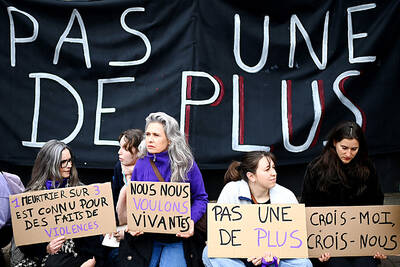
A French-Algerian man went on trial in France on Monday for burning to death his wife in 2021, a case that shocked the public and sparked heavy criticism of police for failing to take adequate measures to protect her. Mounir Boutaa, now 48, stalked his Algerian-born wife Chahinez Daoud following their separation, and even bought a van he parked outside her house near Bordeaux in southwestern France, which he used to watch her without being detected. On May 4, 2021, he attacked her in the street, shot her in both legs, poured gasoline on her and set her on fire. A neighbor hearing
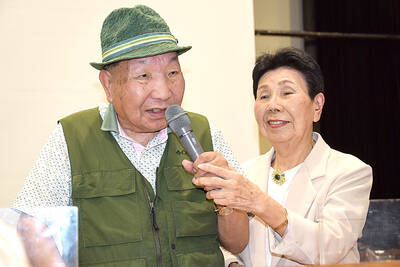
DEATH CONSTANTLY LOOMING: Decades of detention took a major toll on Iwao Hakamada’s mental health, his lawyers describing him as ‘living in a world of fantasy’ A Japanese man wrongly convicted of murder who was the world’s longest-serving death row inmate has been awarded US$1.44 million in compensation, an official said yesterday. The payout represents ¥12,500 (US$83) for each day of the more than four decades that Iwao Hakamada spent in detention, most of it on death row when each day could have been his last. It is a record for compensation of this kind, Japanese media said. The former boxer, now 89, was exonerated last year of a 1966 quadruple murder after a tireless campaign by his sister and others. The case sparked scrutiny of the justice system in
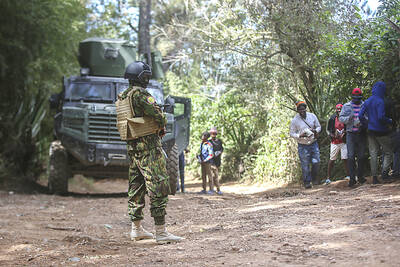
DITCH TACTICS: Kenyan officers were on their way to rescue Haitian police stuck in a ditch suspected to have been deliberately dug by Haitian gang members A Kenyan policeman deployed in Haiti has gone missing after violent gangs attacked a group of officers on a rescue mission, a UN-backed multinational security mission said in a statement yesterday. The Kenyan officers on Tuesday were on their way to rescue Haitian police stuck in a ditch “suspected to have been deliberately dug by gangs,” the statement said, adding that “specialized teams have been deployed” to search for the missing officer. Local media outlets in Haiti reported that the officer had been killed and videos of a lifeless man clothed in Kenyan uniform were shared on social media. Gang violence has left
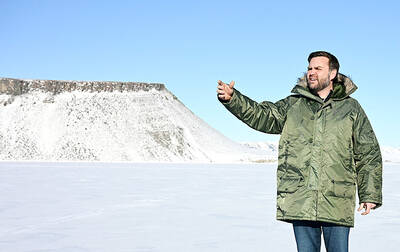
US Vice President J.D. Vance on Friday accused Denmark of not having done enough to protect Greenland, when he visited the strategically placed and resource-rich Danish territory coveted by US President Donald Trump. Vance made his comment during a trip to the Pituffik Space Base in northwestern Greenland, a visit viewed by Copenhagen and Nuuk as a provocation. “Our message to Denmark is very simple: You have not done a good job by the people of Greenland,” Vance told a news conference. “You have under-invested in the people of Greenland, and you have under-invested in the security architecture of this